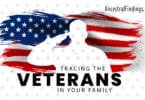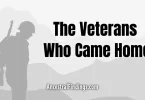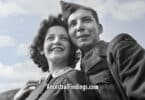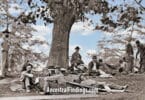The guns fell silent on November 11, 1918. But for millions of American “Doughboys” — the nickname given to U.S. infantrymen in World War I — the story didn’t end there. They returned home changed, stepping into a country that barely resembled the one they’d left. As the 1920s roared into life, veterans tried to rejoin a world moving faster than ever before.
Some blended in. Others struggled. A few stood out. And their second lives often left behind records that are waiting for you to discover.
A Nation Changed — And So Were They
More than 4 million Americans served in World War I. For many, it was their first time out of their home state — or even off the farm. They’d traveled across the ocean, faced trench warfare, poison gas, and artillery fire. And when they came back, they weren’t the same boys who left.
Yet the country was changing, too.
The 1920s were a dizzying decade of economic growth, jazz clubs, Prohibition, rapid industrialization, and social change. The war was supposed to make the world “safe for democracy,” but many veterans felt disoriented, disconnected, or forgotten.
Some marched straight back into daily life. Others found a new sense of purpose — or unrest — in the cultural shifts ahead.
The Bonus That Never Came
One of the first clues to a veteran’s postwar frustration comes in the fight for compensation. Congress offered a $60 bonus check upon discharge — hardly generous for months or years of service. Over time, agitation grew for more substantial benefits.
In 1924, the World War Adjusted Compensation Act passed, granting every WWI veteran a certificate promising payment in 1945. It was too little, too late — especially as the Great Depression approached. Many veterans joined what became known as the Bonus Army in 1932, marching on Washington to demand early payment.
If your ancestor was a WWI vet who struggled financially or who seemed politically active in the 1930s, the Bonus March may be a missing puzzle piece in their story.
What Records Can Tell You
For genealogists, the 1920s are rich with records — and WWI veterans often left strong trails if you know where to look.
Here’s what to track down:
- Draft cards: Already valuable for wartime service info, but some include later updates and addresses.
- Military service summaries: Especially from state archives; they often include medals awarded, wound status, and unit movements.
- Veterans’ questionnaires: Many states sent out surveys to WWI veterans in the 1920s and 1930s asking about their service and current life.
- 1920 and 1930 U.S. Census: Look for “Veteran” notations in the 1930 column — it will indicate if they served in WWI.
- Newspapers: Veterans were frequently mentioned in Legion news, hometown celebrations, and Prohibition raids (especially if they turned to bootlegging).
- Naturalization records: Many immigrant soldiers fast-tracked their U.S. citizenship through wartime service.
And don’t forget city directories — they’ll help you track job changes, address moves, and shifts in occupation after service.
Civilian Lives That Didn’t Come Easy
Some veterans struggled with what we’d now recognize as PTSD. But in the 1920s, it was often called “shell shock,” “war neurosis,” or even “nervous collapse.” These men might appear in:
- Hospital records (particularly veterans’ or psychiatric facilities)
- Divorce files, if stress fractured their marriages
- Alcohol-related arrests — Prohibition made illegal drinking risky, but many veterans drank to cope
- Rest home or “sanitarium” admission logs
Many veterans also moved frequently. The war had exposed them to a larger world, and staying in one town for life felt too small. This can make them hard to track — but also provides a wider footprint to trace.
New Opportunities in a Roaring Decade
On the other hand, plenty of Doughboys thrived in the 1920s. Some used military connections to find work with the federal government or in law enforcement. Others joined fraternal orders like the American Legion, started in 1919 to support veterans. Many became small business owners, factory supervisors, or skilled tradesmen — roles often bolstered by technical experience gained during the war.
Some married late, having waited until after the war to settle down. That can explain why a first child appears in 1922 or 1925 — rather than earlier — even for men born in the 1880s and 1890s.
If your ancestor seems to have started fresh in the 1920s, this period may be the true beginning of your family’s modern story.
For Women, the War Changed Everything
We don’t often think about women when tracing WWI veterans, but thousands served as nurses, clerks, and support staff — both overseas and stateside. Others filled jobs on the home front, stepping into factory and office roles that had been closed to them before.
After the war, many of these women didn’t want to give up their independence. If your great-grandmother or great-aunt never married, worked full-time, or had a professional identity well into the 1930s, it might be because of what she experienced during the war years.
Don’t Forget the Black and Immigrant Veterans
Black Doughboys served in segregated units, often relegated to labor roles or under French command. Their return to America was bittersweet — many came back to Jim Crow laws, racial violence, and limited economic opportunity.
Still, some became leaders in their communities, started newspapers, joined early civil rights movements, or moved north in the Great Migration.
Immigrant veterans — especially those from Eastern and Southern Europe — often used their service as a stepping stone to acceptance and opportunity, though they too faced challenges and discrimination.
These stories can be uncovered in:
- Ethnic press archives
- Church records in immigrant parishes
- Local veteran club rosters, especially segregated American Legion posts
- Community oral histories, often collected in the 1970s and 1980s
The Lasting Impact
World War I changed everything. The war may have ended in 1918, but for the Doughboys, the 1920s were the real test — of recovery, reinvention, and resilience. Whether your ancestor disappeared into hardship or rose to new heights, the postwar decade holds some of the richest, most revealing records in American genealogy.
Take a second look at your family’s 1920s — the music, the work, the marriages, the moves. You might just find a Doughboy quietly shaping the future, one step at a time.






